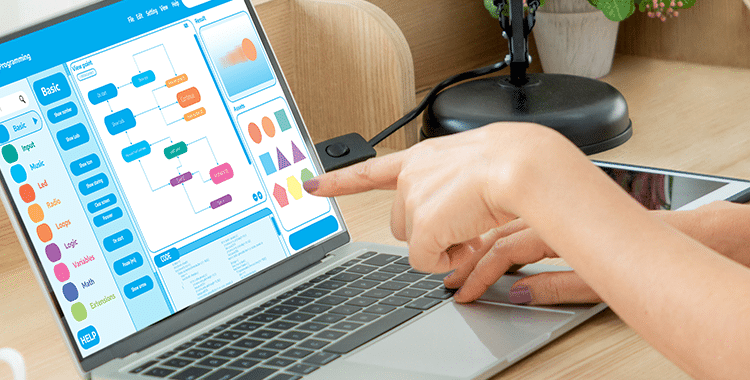Picture this: it’s 7:40 a.m., a mum is already outside your nursery gates, phone in hand, asking if there’s any way she can book her toddler in for the day. Her work rota just changed, again. Sound familiar?
In 2025, flexible childcare is no longer a luxury, it’s becoming an expectation. With hybrid work, shift jobs, and a growing freelance economy, many families no longer fit the standard 9-to-5 office mould. For nurseries, this presents both an exciting opportunity and a significant logistical challenge.
Here’s how you can make flexibility work for your families and your business, with the help of digital tools, a clear policy, and a mindset shift.
What Is Flexible Childcare, Exactly?

Flexible childcare is about giving parents more control over when and how they use your service. It could mean:
• Ad hoc bookings
• Part-time hours
• Term-time only options
• Extended morning or evening sessions
• Pay-as-you-go care (or top-up hours)
The key is customisation based on what modern families need.
Why Parents Are Asking for Flexibility

A quick look at modern work trends tells the story. According to a recent ONS report on labour market changes, over 40% of UK workers in knowledge-based roles now work from home or follow hybrid schedules. Add in health appointments, last-minute freelance gigs, or just plain family juggle, and fixed nursery hours can feel like a barrier.
Flexibility helps parents:
• Match childcare to irregular work patterns
• Save money on unused hours
• Maintain a better work-life balance
For many, the ability to book on a Tuesday this week and a Thursday next week isn’t just helpful, it’s essential.
The Business Case for Nurseries
Offering flexible childcare can be a strategic move:
• Attract more families who can’t commit to full-time care
• Fill underused spaces during quieter hours
• Boost parent satisfaction and loyalty
That said, it comes with some wrinkles, namely, staff planning, managing ratios, and keeping track of invoicing.
So, how do you offer flexibility without getting bogged down in admin?
Digital Tools Make It Possible
Here’s where your nursery software can really shine. With the right platform, you can:
Enable live session booking
Let parents see real-time availability and book instantly via an app or portal, whether it’s 7 a.m. or 9 p.m.
Track ratios in real time
Digital dashboards help you manage staff-to-child ratios dynamically as bookings change.
Automate invoicing
Parents who book variable hours can receive accurate bills with no manual maths or last-minute panic.
Log attendance and cancellations
Keep clear, digital records to support funding claims, planning, and forecasting.
This isn’t just about convenience. It’s about staying compliant while also staying competitive.
How Nursery in a Box Supports Flexible Models
Nursery in a Box makes flexible childcare manageable, even for smaller settings.
• Parents can book sessions through the app and receive instant confirmation.
• Ratios update automatically based on bookings and staff assignments.
• Session-specific billing means parents only pay for what they use.
• You can block out dates, set capacity rules, or build in notice periods.
Whether you offer full-day, half-day, or pay-as-you-go, you’re always in control.
Tips for Transitioning to a Flexible Model
1. Start small
Trial flexible Fridays or open one room for ad hoc bookings. See what uptake and admin load look like.
2. Communicate clearly
Set terms and policies in advance:
• Minimum notice for bookings
• Cancellation windows
• How invoicing works
This helps avoid confusion and protects your staffing schedule.
3. Train your team
Your staff need to feel confident managing flexible rosters, updating digital registers, and explaining policies to parents. Invest a little time up front, it pays off in the long run.
4. Use data to plan smartly
Monitor trends in session popularity, absenteeism rates, and parental demand. Tools like the DfE’s data dashboards can help compare your nursery’s patterns to broader trends.
5. . Gather parent feedback
Ask parents what kind of flexibility they need most. Just a few tweaks to your hours or session structure go a long way.
Common Concerns (and Reassurances)
Won’t this be chaos? Not if it’s planned. Your software can provide structure and guardrails. And your policies set expectations early.
What about staff burnout? Flexible care doesn’t mean 24/7 care. Use booking data to stagger staff hours fairly, and lean on digital rotas to plan ahead.
Is this financially viable? Absolutely, when done right. Use real-time insights to monitor occupancy, forecast revenue, and avoid empty spaces.
The Future Is Flexible
Whether it’s for convenience, cost, or just survival, families in 2025 need more adaptable care options. And the nurseries that evolve to meet that need? They’ll be the ones that thrive.
With the right tools, processes, and mindset, flexible childcare doesn’t have to mean complicated childcare. It just means smarter childcare.
Final Thoughts: Empower Parents, Empower Your Team
Offering flexibility can feel daunting, but done well, it makes your nursery more responsive, more resilient, and more in tune with today’s families.
Nursery in a Box helps you make it happen.
• Live bookings
• Instant billing
• Ratio alerts
• Customisable schedules
So next time a parent calls in a panic, you can say: “No problem. Let’s get you sorted.”
Want to explore flexible childcare solutions?
Book your free demo of Nursery in a Box today and see how digital tools can help you do more with less stress.

Hannah
Marketing Manager




